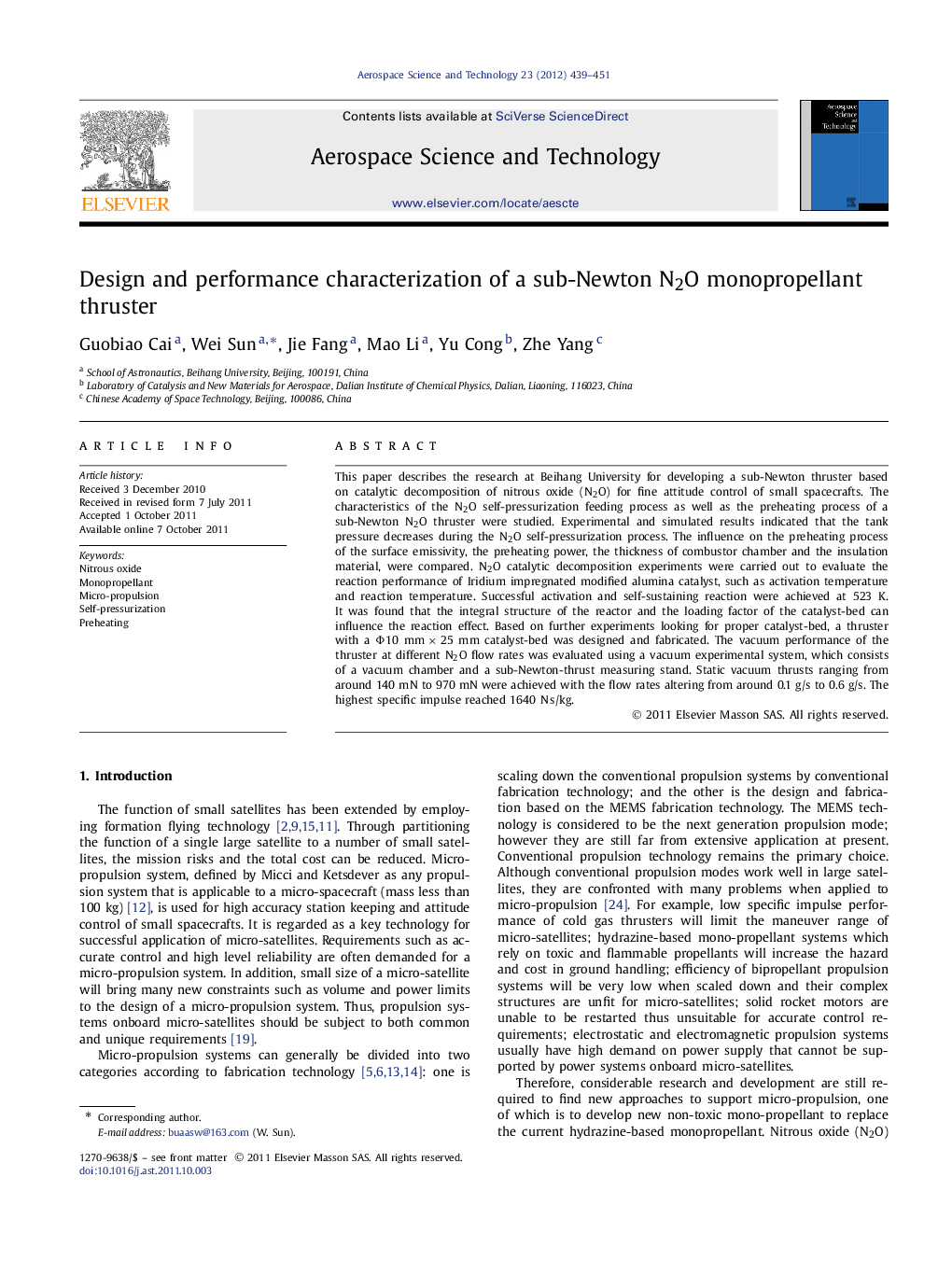| Article ID | Journal | Published Year | Pages | File Type |
|---|---|---|---|---|
| 1718385 | Aerospace Science and Technology | 2012 | 13 Pages |
This paper describes the research at Beihang University for developing a sub-Newton thruster based on catalytic decomposition of nitrous oxide (N2O) for fine attitude control of small spacecrafts. The characteristics of the N2O self-pressurization feeding process as well as the preheating process of a sub-Newton N2O thruster were studied. Experimental and simulated results indicated that the tank pressure decreases during the N2O self-pressurization process. The influence on the preheating process of the surface emissivity, the preheating power, the thickness of combustor chamber and the insulation material, were compared. N2O catalytic decomposition experiments were carried out to evaluate the reaction performance of Iridium impregnated modified alumina catalyst, such as activation temperature and reaction temperature. Successful activation and self-sustaining reaction were achieved at 523 K. It was found that the integral structure of the reactor and the loading factor of the catalyst-bed can influence the reaction effect. Based on further experiments looking for proper catalyst-bed, a thruster with a Φ10 mm×25 mmΦ10 mm×25 mm catalyst-bed was designed and fabricated. The vacuum performance of the thruster at different N2O flow rates was evaluated using a vacuum experimental system, which consists of a vacuum chamber and a sub-Newton-thrust measuring stand. Static vacuum thrusts ranging from around 140 mN to 970 mN were achieved with the flow rates altering from around 0.1 g/s to 0.6 g/s. The highest specific impulse reached 1640 N s/kg.
